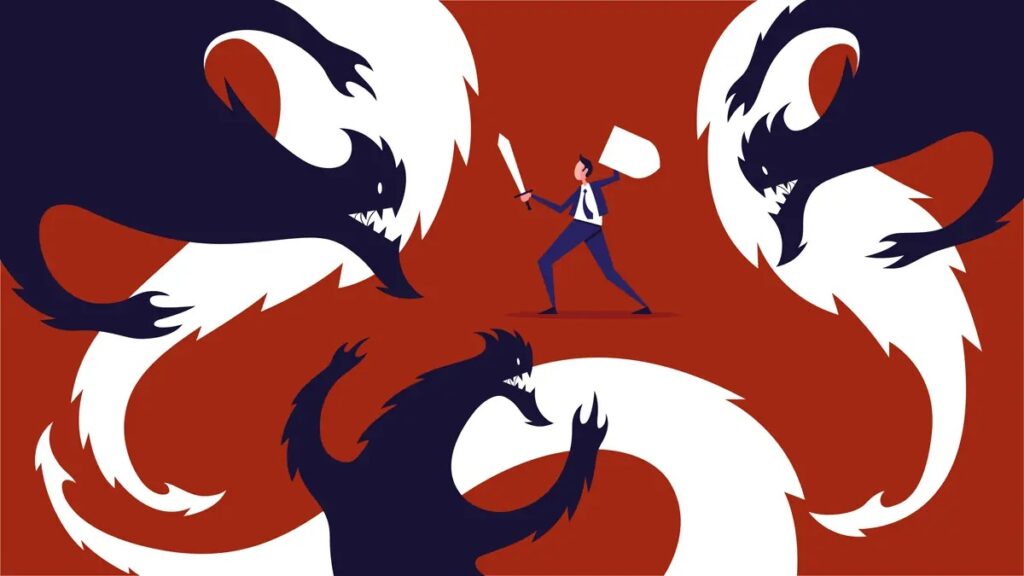A 4T Framework for Protecting Your Brand From Disinformation
By Ajay Khari
On July 24, 2023
Brand resilience is an iterative discipline

Our shift to a more digital world has allowed sophisticated capturing of personal data as users surf the internet, which has spawned highly personalized content through micro-targeting. On the other side of the same coin, it has never been easier for bad actors to spread disinformation and misinformation narratives at scale.
Indeed, the Cambridge Analytica scandal involved the unconsented harvesting of personal data for the purpose of political advertising, leading to carefully crafted messages, not all of them true. Such falsehoods capitalize on anxieties and vulnerabilities, in turn creating division and unrest that undermine cohesive society. These narratives are attacks on our cognitive equilibrium: Notably, Yuval Noah Harari—author of Sapiens—has remarked, “What nukes are to the physical world … AI is to the virtual and symbolic world.”
For businesses, the notion of “brand” has never been more important. Brand is a cognitive term—that is, it captures how we reason and what we feel about an offering’s unique qualities and competitive advantage. Brand is an intangible asset on the balance sheet, critically exposed to the inadvertent and deliberate creation of mistruths against it. Both have the propensity to go viral in today’s hyperconnected world, with low barriers to entry for creating and publishing content. Consequently, the threat of reputational damage has never been higher, and, with it, the risk of large swathes of consumers turning their backs on targeted brands.
Furthermore, financial market manipulation creates economic instability, meaning adversarial foreign states also have a motivation to target private organizations that generate huge sums for allied and interdependent economies. Businesses therefore need to create resilience to this form of economic warfare. I propose the following 4T framework.
Track
Organizations need to invest in early identification of false narratives that could be used against their brand; in effect, the “weak signals” that lend themselves to increasingly vital scenario-planning exercises.
Invest in technology that can analyze vast amounts of social and media data, with the ability to filter for mentions from disreputable sources. Seek to understand the spread of the falsehood and its potential impact, in part by identifying audience segments and their receptiveness to false narratives. Detection and monitoring must be done in real time to yield the necessary alerts and detailed analytics to stimulate the right decision-making at the right time.
Importantly, this goes beyond simply monitoring for brand mentions but extends to keywords and topics in an organization’s wider ecosystem—supply chain and competitors, for example—to mitigate against the chances of reputational spillover. Accordingly, due to the wealth of data involved, work with a vendor that has a strong track record of using artificial intelligence to identify and structure these insights.
Transparency
Brand values will be key. Typically, in dis- and misinformation campaigns, it is those values that are attacked. Having a purposeful identity, backed up by thoughtful, localized communication and contributions to the greater good, will give businesses some degree of inoculation.
Be mindful of programmatic advertising and publications that lack journalistic credibility: Do not fall foul to the “views over news” pathology that places brands next to adversarial content to draw crowds. Similarly, think twice before proclaiming eco-friendly credentials—greenwashing will cost you sooner than you think; it was cited as a risk by 14 S&P 500 members in their 10-Ks this year—up from five in 2022.
Falsehoods thrive when trust in your brand is already low. Take stock of which channels matter most to your consumers and consistently engage with them there. Similarly, organizations need to work with influencers who are comfortable not only in championing products but also espouse the values of the brand itself.
Test
Cybersecurity is typically thought of in terms of IT penetration testing, where network resilience is challenged by simulating a cyberattack. However, the definition of a cyberattack should expand to include online dis- and misinformation, as human perception has become a central battleground. Businesses need to use traditional market engagement skills to test for brand resilience—ask your consumers, “If this narrative came out about our brand, would you believe it and how would it impact your behavior?”
Moreover, business leaders need to create an open environment within their organizations to have honest conversations about brand perception in safe spaces. The employee stakeholder group is a powerful perceptive force into brand health and is also significantly responsible for the brand health itself. Brands that do not respond to activism from one stakeholder group will see the issues seep into other stakeholder groups, impairing trust on an endemic level.
Transform
Brand resilience is an iterative discipline. The outcome of the Test should inform what to Track, how to adjust communications campaigns and so on and so forth.
Organizations that want to build resilience against dis- and misinformation need precise reporting and accurate data to shape and continuously evolve their communications strategies. Daily reporting contextualizes the media stories disseminating false narratives, highlighting media angles and assessing impact. Monthly and quarterly reporting investigates trends and patterns behind false narratives, painting a bigger picture of the narrative landscape. With a holistic reporting approach, organizations can track the spread of false narratives and their impacts on overall brand or organizational health.
Advances in artificial intelligence and its deployment in the world will present new opportunities and threats for the fabric of society and will impact human cognitive behavior on an unprecedented level. Businesses and brands need to win hearts and minds to proactively repel potential falsehoods that could cost them dearly in the future.
This piece was republished from the AdWeek.